Excerpts from Jim Conrad's
Naturalist Newsletter
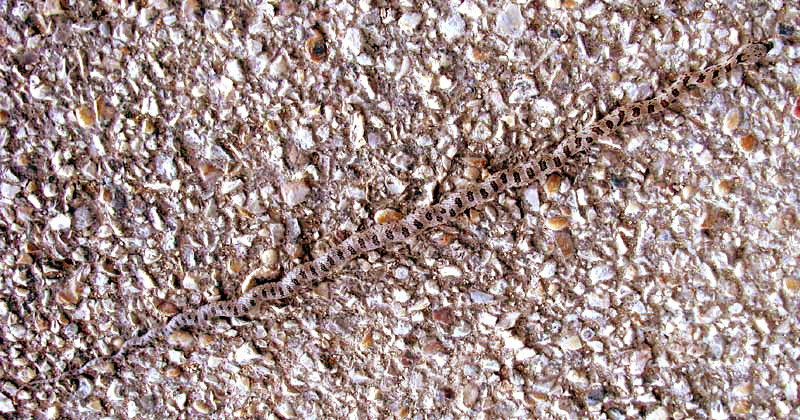
from the October 27, 2013 Newsletter issued from the Frio Canyon Nature Education Center in the valley of the Dry Frio River in northern Uvalde County, southwestern Texas, on the southern border of the Edwards Plateau; elevation ~1750m (~5750 ft); N29.62°, W99.86°; USA
BAIRD'S RATSNAKE
One warm afternoon this week as I biked the paved road below Juniper House I almost ran over a crack in the asphalt, which was odd, since there'd never been a crack there before, plus the crack was straight, while most cracks snake about. After turning around the bike I saw that something was indeed snaking about, as shown above.
How odd that this snake lay there with such a straight body. It's hard to see how he could move forward. He was a small one, only about 15 inches long (38cm), but his markings were so distinct that I thought I might be able to identify him. A closer shot of the head showing a distinctive dark bar running diagonally up through the eyes and across the upper snout, and with a neat circle of spots crowning the head, is shown below:
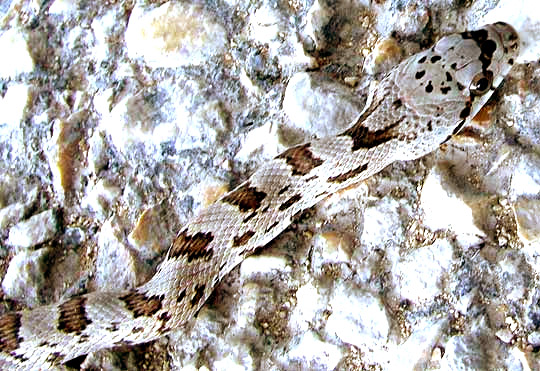
A close-up detailing the critical-for-identification head scales appears below:
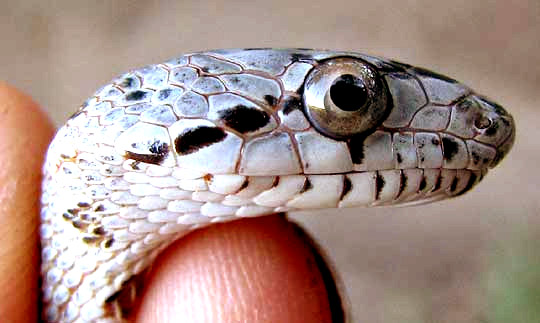
A similar shot from the top appears below:
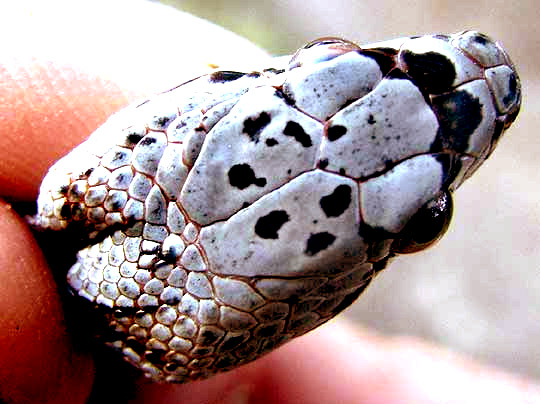
It's always good with an unidentified snake to see if the body scales each have a little ridge, or "keel," running down their backs. Below, you can see that this snake's scales are "smooth," with no keels:
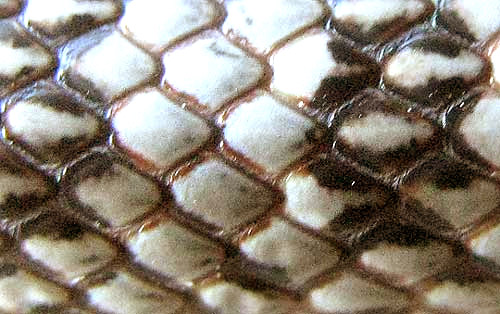
Another diagnostic feature to look for is whether the scale above the anus is divided or else consists of a single broad scale. This snake's "anal plate" is shown below:
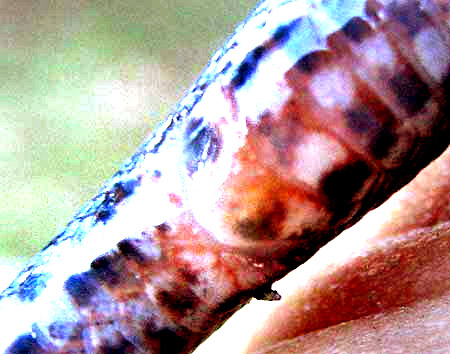
At first I thought that the anal plate -- the scale in the picture's center -- was "divided," but looking more closely it was clear that no definite division slanted across the scale's center. At one side of the scale there's a sunken-in oval spot I can't explain, but that's not a division. Well, with my old Audubon field guide for North American reptiles and amphibians it was easy to figure out the snake's ID, and this species has an undivided anal plate.
*UPDATE: Despite the field guide's help, I misidentified this as a Glossy Snake, Arizona elegans. When the above images were uploaded to iNaturalst, user "wild-about-texas" recognized it as an immature Baird's Ratsnake, PANTHEROPHIS BAIRDI; mature Baird's Ratsnakes are pale brown with darker brown longitudinal lines, looking very different from what we have.
Bair's Ratsnakes are distributed in southwestern Texas and adjacent northeastern Mexico. Adults are said to reach up to 1.4m (55inches). They eat rodents and sometimes birds, while juveniles often feed on lizards. The Wikipedia Pantherophis bairdi page tells us that the species is known to be elusive and hard to find in the wild.